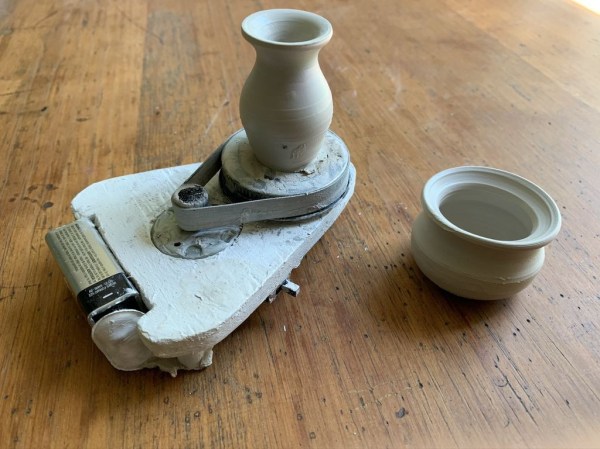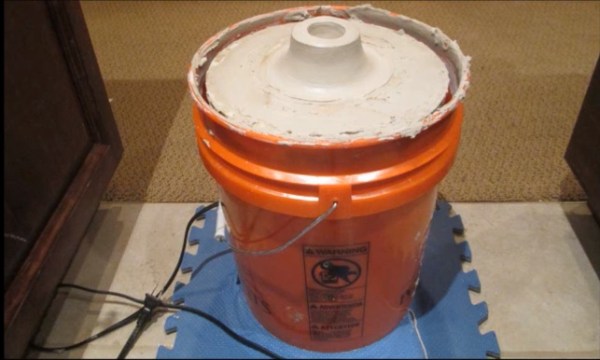If 2020 can be remembered in any positive light, it would be that this has been the year of the hobby tryouts. Why not pottery? Sure, throwing pots won’t fill your belly like homemade bread. But we would bet you can see the value in having a bunch of expendable objects that are easily (and quite satisfyingly) smashed to smithereens. The best part is that between the workbench, junk box, and recycle bin, you can probably build [Jadem52]’s pottery wheel for ants with stuff you already have. Bonus!
Pottery wheels aren’t that complicated. They’re honestly kind of expensive for what they are — a motor and a belt driving a rotating platter. It’s like a record player, but less fussy. Where they really get you on expense is the kiln to heat-treat those pots into sturdy vessels. But you could always use air-dry clay, especially if you’re making these things just to smash them whenever you need to let off some steam.
So anyway, you don’t need much more than a motor, a jar lid for a wheel to throw on, and a bearing to make it spin smoothly. Store-bought pottery wheels have a foot feed to control the motor speed, but this pocket version is either spinning on nine volts or it isn’t. The great thing about a project like this is that once you have the general principle down and use the thing, you can iterate and upgrade to your heart’s content. Take it for a little spin after the break.
If you want to hack together a more conventionally-sized wheel, an old ceiling fan motor should be more than sufficient.
Continue reading “Take Pottery For A Spin With A Pocket-Sized Wheel”













